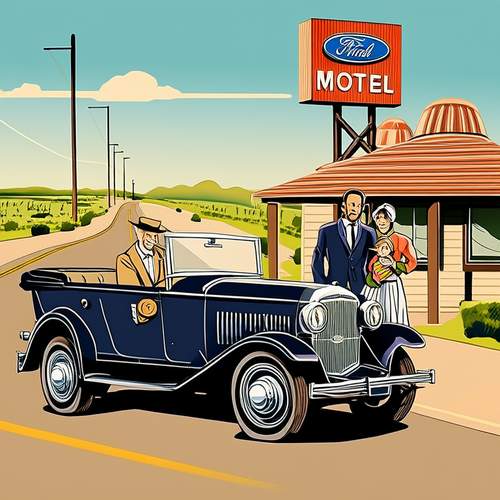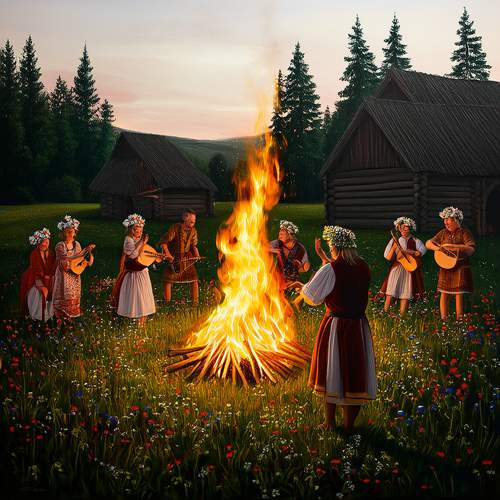In the early 20th century, America was on the move. The advent of affordable automobiles, particularly the Ford Model T, sparked a revolution in personal transportation. Families and friends began to explore the vast expanse of the country, embarking on road trips that would take them to distant cities, scenic landscapes, and quaint towns. This newfound freedom of movement, however, brought with it a pressing need: affordable, convenient lodging for those traveling by car. Enter the motel, a concept that would forever change the landscape of American travel.
The Visionary Behind the Motel
The story of the motel begins with a visionary named Arthur Heineman. An architect by trade, Heineman recognized a gap in the hospitality industry. Traditional hotels, often located in city centers, were not designed for the needs of motorists. They lacked secure parking and were often too expensive for the average traveler. Heineman saw an opportunity to create something new, something that would cater specifically to the needs of those on the open road.
His idea was simple yet revolutionary: the "motor hotel," soon shortened to "motel." The concept was designed to provide low-cost accommodations with secure parking facilities, all conveniently located along major highways. Heineman's first motel, the Milestone Mo-Tel, later renamed the Motel Inn, opened its doors in 1925 in San Luis Obispo, California. This location was strategic; situated midway between Los Angeles and San Francisco, it was the perfect stop for travelers making the long journey up and down the California coast.
The Milestone Mo-Tel: A Beacon for Travelers
The Milestone Mo-Tel was more than just a place to sleep; it was a symbol of a new era in travel. Designed with inspiration from the nearby Spanish missions, the motel featured modern conveniences that were considered luxurious at the time. Rooms included hot showers, indoor carpeting, and private garages where guests could safely park their cars. For just $1.25 a night, travelers could enjoy a comfortable stay without breaking the bank.
The success of the Milestone Mo-Tel was immediate. It quickly became a popular stop for motorists, offering a level of convenience and affordability that was previously unheard of. Word spread, and soon other entrepreneurs began to see the potential in Heineman's idea. Motels began to spring up along highways across the country, each offering its own unique take on the concept.
The Golden Age of Motels
The 1930s and 1940s marked the golden age of motels. As more Americans took to the roads, the demand for affordable lodging grew. Motels became a staple of American travel, offering a blend of comfort and convenience that was hard to resist. Many motels added additional amenities to attract travelers, such as swimming pools, restaurants, and even drive-in movie theaters.
One of the most iconic motels of this era was the Wigwam Motel, which featured teepee-shaped rooms that captured the imagination of travelers. The Alamo Plaza Hotel and Motor Courts in Texas offered a taste of Southwestern hospitality, while the Skyway Motel in New Hampshire boasted stunning views of the White Mountains. Each motel had its own unique charm, reflecting the local culture and landscape.
The Decline and Resurgence of Motels
Despite their initial popularity, motels began to decline in the latter half of the 20th century. The rise of interstate highways and the growth of chain hotels led to a shift in the hospitality industry. Many motels, unable to compete with the amenities and branding of larger hotel chains, fell into disrepair. Some were demolished, while others were left to decay, becoming relics of a bygone era.
However, in recent years, there has been a resurgence of interest in motels. Historians and preservationists have recognized their cultural significance, and efforts have been made to restore and repurpose many of these historic sites. The Motel Inn, for example, though closed since 1991, remains a symbol of the motel's enduring legacy. Its original sign, featuring the iconic "Motel Inn" name, still stands as a testament to the vision of Arthur Heineman.
The Enduring Legacy of the Motel
The motel, born out of a need for affordable, convenient lodging, has left an indelible mark on American culture. It represents a time when travel was an adventure, when the open road beckoned with the promise of new experiences. Motels were more than just places to sleep; they were waypoints on a journey, symbols of freedom and exploration.
Today, the motel's legacy lives on in the countless roadside inns that dot the American landscape. While the concept has evolved, the core idea remains the same: to provide a comfortable, affordable place for travelers to rest their heads. Whether it's a historic motel preserved for its cultural significance or a modern roadside inn offering the latest amenities, the motel continues to play a vital role in the American travel experience.
A Journey Through Time
The birth of the motel was more than just a business innovation; it was a cultural phenomenon. It captured the spirit of a nation on the move, eager to explore and discover. Arthur Heineman's visionary idea not only solved a practical problem but also created a new way of experiencing travel. The motel became a symbol of the American road trip, a journey filled with adventure, discovery, and the simple joy of being on the open road.
As we look back on the history of the motel, we are reminded of the enduring appeal of travel. Whether you're driving along the Pacific Coast Highway, cruising through the heartland, or exploring the back roads of America, the motel stands as a beacon of comfort and convenience. It is a testament to the ingenuity of its creators and the enduring spirit of those who seek to explore the world around them.
In a world that is constantly changing, the motel remains a timeless reminder of the joy of travel. It invites us to step off the beaten path, to explore new places, and to create memories that will last a lifetime. The motel, in all its forms, is more than just a place to stay; it is a journey through time, a connection to the past, and a gateway to the future.

By /May 21, 2025

By /May 21, 2025

By /May 21, 2025

By Benjamin Evans/May 20, 2025

By /May 11, 2025

By /May 11, 2025

By /May 11, 2025

By /May 11, 2025

By /May 11, 2025

By /May 11, 2025

By /May 11, 2025

By /May 11, 2025

By /May 11, 2025

By /May 11, 2025

By /May 11, 2025

By /May 11, 2025

By /May 11, 2025

By /May 11, 2025

By /May 11, 2025

By /May 11, 2025